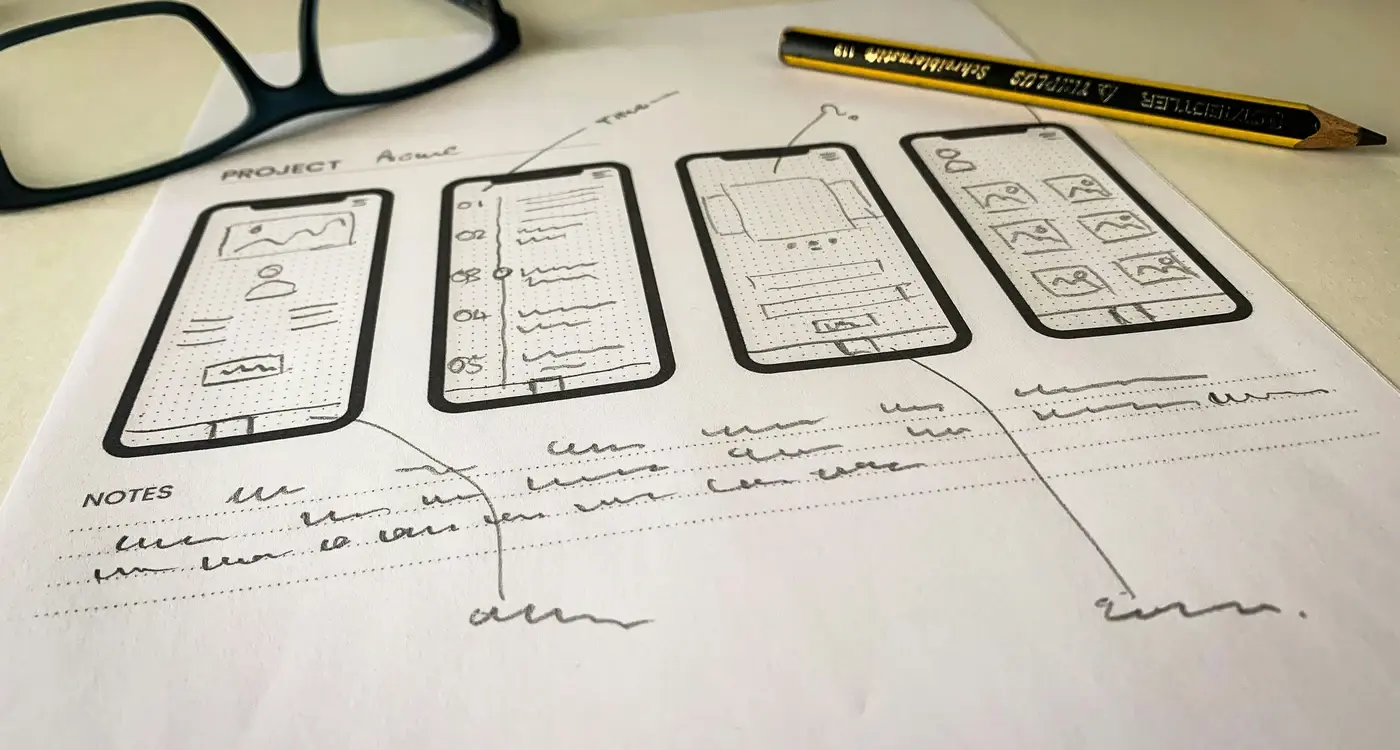No-Code App Development: Advantages, Limitations, and Best Use Cases
Remember the days when building a mobile app meant learning complex programming languages or hiring expensive developers? Those barriers are rapidly falling away thanks to the rise of no-code app development - a revolutionary approach that's changing how businesses and entrepreneurs bring their ideas to life.
As a team that's helped hundreds of businesses navigate their app development journey, we've witnessed firsthand how no-code platforms are democratising technology. It's rather like the shift from needing a professional photographer to being able to take stunning photos with your smartphone - the tools have become more accessible, but understanding when and how to use them is crucial.
The best technology is the one that enables innovation without requiring expertise, yet knows its own limitations
Whether you're a small business owner looking to streamline operations, an entrepreneur with a groundbreaking app idea, or a corporate innovator seeking faster solutions, you've likely heard whispers about no-code development. Perhaps you're wondering about its benefits, questioning its limitations, or simply trying to understand if it's the right choice for your project.
In this comprehensive guide, we'll explore the advantages and limitations of no-code app development, compare it with low-code development approaches, and help you understand exactly when no-code solutions shine brightest - and when traditional development might be a better fit. We'll cut through the hype and provide honest, practical insights based on real-world experience, helping you make an informed decision about your development journey.
What is No-Code Development?
Remember when building a house meant you needed to be a skilled architect, carpenter, and builder all rolled into one? No-code development is a bit like modern flat-pack furniture for the digital world - it lets you create functional, beautiful apps without writing a single line of code.
At its core, no-code development uses visual interfaces where you can drag and drop elements, much like arranging furniture in a room. Instead of typing complex programming languages, you're working with pre-built components that you can customise to your needs. Think of it as building with digital LEGO blocks - each piece serves a specific purpose, and you can connect them to create something meaningful.
How Does No-Code Actually Work?
Behind the scenes, no-code platforms translate your visual actions into proper programming code automatically. It's similar to how a digital camera processes the image you see through the viewfinder into a detailed photo file - you don't need to understand the technical bits to get great results.
The interface typically includes elements like:
• Ready-made templates to get you started
• Drag-and-drop components for features and design
• Visual workflow builders for app logic
• Built-in testing tools to ensure everything works properly
We've seen countless aspiring creators light up when they realise they can bring their app ideas to life without spending years learning to code. It's particularly exciting for small business owners and entrepreneurs who need to move quickly and can't afford to wait months for traditional development cycles.
But while no-code development is revolutionary, it's important to understand its scope and limitations - which we'll explore in the following sections.
Key Benefits of No-Code App Development
Having worked with countless businesses on their app development journeys, we've seen firsthand how no-code development has transformed the way people bring their ideas to life. Let's explore the compelling benefits that make this approach so attractive.
Speed and Cost-Effectiveness
Perhaps the most striking advantage of no-code app development is the dramatic reduction in development time and costs. Think about it like using building blocks instead of crafting each brick from scratch - you can create something meaningful in days rather than months.
- Reduced development time (up to 80% faster)
- Lower initial investment costs
- Minimal technical maintenance expenses
- Quick iterations and updates
- Immediate testing capabilities
Accessibility and Empowerment
No-code platforms democratise app development, making it accessible to everyone from marketing professionals to small business owners. Just as WordPress made website creation available to the masses, no-code app benefits include enabling non-technical innovators to build functional applications.
When comparing low-code development approaches, no-code stands out for its pure visual interface, requiring absolutely no coding knowledge. This means you can focus on what matters most - solving problems and creating value for your users.
Before starting your no-code project, create a detailed plan of your app's features and user journey. This preparation will help you choose the right no-code platform and save considerable time during development.
Finally, no-code platforms often come with built-in compliance and security features, reducing the risk of technical vulnerabilities that might occur with manual coding. It's like having a safety net while you innovate!
Popular No-Code Development Platforms
Having worked with countless businesses on their app development journeys, we've seen the no-code landscape evolve dramatically. Let's explore some of the most reliable platforms that are making waves in the no-code world - think of them as your digital building blocks!
Visual Development Platforms
Bubble leads the pack for web application development, offering a comprehensive visual editor that feels a bit like working with digital Lego blocks. It's particularly brilliant for creating marketplaces and social networks. Adalo, meanwhile, shines in the mobile app space, making it possible to craft native-feeling apps without writing a single line of code.
Specialised Solutions
If you're looking to create something specific, platforms like Shopify's custom app builder excel at e-commerce solutions, while Glide turns your Google Sheets into fully functional apps - perfect for business tools and internal applications. Think of it as transforming your spreadsheets into a sleek, professional app!
We've noticed that many of our clients initially feel overwhelmed by the choices available. That's perfectly normal! Each platform has its sweet spot. For instance, Webflow is fantastic for creating stunning websites with complex animations, while Airtable excels at building robust databases with user-friendly interfaces.
Remember, choosing the right platform isn't about picking the most popular one - it's about finding the tool that best matches your specific needs. Just as you wouldn't use a hammer to paint a wall, each no-code platform has its ideal use case. The key is understanding what you want to build and then selecting the platform that aligns with your vision.
No-Code vs Low-Code: Understanding the Differences
When exploring different development approaches, it's common to feel confused about the distinction between no-code and low-code platforms. Think of it like cooking: no-code is like using a ready-made meal kit where everything is prepared for you, while low-code is more like having pre-chopped ingredients that you can combine in your own way.
The No-Code Approach
No-code platforms are truly what they say on the tin - they require absolutely no coding knowledge. Using visual interfaces and drag-and-drop elements, anyone can build basic applications, much like arranging furniture in a room. These platforms offer tremendous no-code app benefits, particularly for business users who need to create simple applications quickly.
The Low-Code Middle Ground
Low-code development comparison reveals a more flexible approach. These platforms still use visual tools, but they also allow developers to dive into the code when needed. It's like having a car with both automatic and manual modes - you can switch between visual development and traditional coding as required.
The choice between no-code and low-code isn't about which is better - it's about matching the right tool to your specific needs and technical expertise
While both approaches aim to speed up development, they serve different audiences. No-code platforms are perfect for business users creating straightforward applications, while low-code platforms cater to developers who want to accelerate their workflow without sacrificing flexibility. The key is understanding your team's technical capabilities and your project's requirements before making a choice.
Common Myths About No-Code Development
Like any emerging technology, no-code development has accumulated its fair share of myths and misconceptions. As app developers who work with both traditional and no-code solutions, we've heard them all - and it's time to set the record straight.
Myth 1: No-Code Apps Are Just for Simple Projects
We often hear people dismiss no-code platforms as 'toy builders' only suitable for basic applications. Nothing could be further from the truth! Modern no-code platforms can create sophisticated applications, including e-commerce systems and complex business tools. Think of no-code platforms like LEGO bricks - while they're simple to use, you can build remarkably complex structures with them.
Myth 2: No-Code Means No Control
Another common misconception is that no-code platforms offer limited customisation. In reality, many no-code tools provide extensive customisation options, including API integrations, custom workflows, and branded designs. It's rather like having a fully equipped kitchen - just because you're using pre-made ingredients doesn't mean you can't create unique, tailored dishes.
We've also encountered the myth that no-code platforms aren't secure or scalable enough for business use. However, reputable no-code platforms often have enterprise-grade security features and can handle significant user loads. Companies like Airbnb and Netflix even started with relatively simple platforms before scaling up.
Perhaps the biggest myth is that no-code will replace traditional developers. In our experience, no-code tools are simply another instrument in the modern developer's toolkit, complementing rather than replacing traditional coding. Just as calculators didn't replace mathematicians, no-code platforms won't replace developers - they'll just help us all work more efficiently.
Limitations and Potential Drawbacks
While no-code development platforms offer fantastic opportunities for rapid app creation, it's important to understand their limitations. Think of it like using building blocks - they're brilliant for creating standard structures, but you might struggle when trying to build something completely unique.
Technical Constraints
No-code platforms typically offer a finite set of features and templates. Whilst these cover many common scenarios, they can feel restrictive when you need highly customised functionality. Imagine trying to create a completely new type of social media feature - you might find yourself limited by what the platform allows you to do.
Performance and Scalability
As your app grows, you might notice that no-code solutions don't always scale as efficiently as traditionally coded applications. It's rather like the difference between a ready-made suit and a bespoke one - the former works well for many people, but might not fit perfectly as your needs become more specific.
Another consideration is that you're often dependent on the no-code platform's infrastructure. If they experience issues or make significant changes, your app could be affected. This lack of complete control over your application's destiny is something to weigh up carefully.
Before starting a no-code project, list out all your required features and check if your chosen platform can support them. It's much better to discover limitations early than halfway through development!
Understanding these limitations doesn't mean no-code development isn't valuable - it absolutely is! But like any tool, it's most effective when used for the right job. When comparing no-code development to traditional coding or low-code development, these constraints might help you make a more informed decision about which path to take.
Best Use Cases for No-Code Apps
Having worked with countless businesses on their app development journeys, we've identified several scenarios where no-code platforms truly shine. Think of no-code development as being similar to using building blocks - perfect for constructing certain types of structures, but perhaps not ideal for building a skyscraper!
Ideal Scenarios for No-Code Solutions
No-code platforms excel when you need to create straightforward, functional applications quickly. They're particularly brilliant for small to medium-sized businesses looking to digitalise their operations without breaking the bank.
- Internal team tools and workflows (like holiday request systems or inventory tracking)
- Simple customer-facing mobile apps (such as restaurant ordering or appointment booking)
- Minimum Viable Products (MVPs) for testing business ideas
- Basic e-commerce applications
- Event management and registration systems
- Customer feedback and survey applications
- Content management systems for small websites
We've seen fantastic success stories, like a local bakery that used a no-code platform to create an order management system in just two weeks. It transformed their business from managing orders via WhatsApp to having a professional, automated system.
However, it's worth noting that these platforms work best when your requirements align with their pre-built features. If you're planning something unique or highly customised, you might want to explore traditional development options. Think of it like cooking - no-code platforms are like ready-made meal kits: perfect for many occasions, but if you're planning a Michelin-star dish, you might need a professional chef's expertise!
When to Choose Traditional Development Instead
While no-code platforms offer fantastic benefits for many projects, there are situations where traditional development is the better choice. Having worked with hundreds of clients across both no-code and traditional development approaches, we've identified several key scenarios where conventional coding is the way to go.
The beauty of traditional development isn't just in its flexibility - it's in its ability to turn even the most complex digital dreams into pixel-perfect reality.
Complex Functionality Requirements
If your app needs highly specialised features, complex algorithms, or deep integration with unusual third-party services, traditional development offers the flexibility and control you need. Think of it like building a house - whilst no-code platforms are brilliant for standard layouts, you'll want an architect and builder for that underwater glass-floor cinema room!
Scalability and Performance Demands
When you're expecting massive user numbers or need extremely fast performance, traditional development gives you the power to optimise every aspect of your application. This is particularly important for apps handling sensitive data or requiring split-second responsiveness, like financial trading platforms or real-time gaming applications.
Custom design requirements also often necessitate traditional development. Whilst no-code and low-code development platforms offer impressive template options, some brands require unique interfaces that perfectly match their vision. Traditional development allows for pixel-perfect customisation and complete control over the user experience.
Remember, choosing between traditional and no-code development isn't about which is 'better' - it's about selecting the right tool for your specific needs. Sometimes, the investment in traditional development pays dividends in the long run through enhanced flexibility and scalability.
Conclusion
No-code development has undeniably transformed the way we approach app creation, making it more accessible to entrepreneurs, small business owners, and creative professionals who previously might have felt locked out of the digital revolution. Like any technological advancement, it's not a one-size-fits-all solution – and that's perfectly fine.
Think of no-code platforms as being similar to ready-to-assemble furniture. They're brilliant when you need something functional, cost-effective, and relatively quick to put together. However, just as you might want a master carpenter for a bespoke piece of furniture, there are times when traditional development is the better choice for your unique app requirements.
The key is understanding your specific needs, resources, and long-term goals. If you're a startup looking to validate an idea quickly or a small business aiming to streamline internal processes, no-code could be your perfect starting point. On the other hand, if you're planning a complex application with unique features and scalability requirements, traditional development might be the way forward.
What's most exciting is that no-code development isn't replacing traditional coding – it's complementing it. It's creating new opportunities for innovation and allowing more voices to contribute to the digital landscape. Whether you choose no-code, traditional development, or a hybrid approach, the most important thing is making an informed decision that aligns with your project's needs.
Remember, there's no wrong choice as long as it helps you achieve your goals effectively. The digital world is big enough for both approaches to thrive, and that's something worth celebrating.
Share this
Subscribe To Our Blog
You May Also Like
These Related Stories

Solo App Development: The Honest Path from Concept to Launch

No-Code vs. Custom Development: The Honest Comparison





